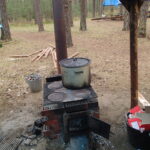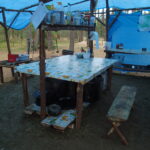Smoking is by far my favourite food preservation method. It’s not because of the preservation itself, but because of the way it changes the flavour of food. Smoking is very simple, and over the past few years I have learned some basics. This year, during a scout camp, I also experimented with a makeshift smoker, so I want to share some of my knowledge with you.
What is smoking?
Smoking is one of the oldest food preservation methods known. It’s basically just exposing your food to smoke for an extended period of time, allowing the compounds from the smoke to settle on your produce. The substances found in smoke preserve the meat by slowing the oxidation process and inhibiting bacterial growth. Smoke also leaves a strong aroma which is sought after by many. So, if you want to prolong your food’s shelf life or make it taste better, smoking is for you.
Building the smoker
Smokers are simple structures. They must have a place to make a fire and a compartment that fills with smoke where you can leave your food to be smoked. People make smokers out of old barrels and chests; sometimes they build a smokehouse. My go-to solution for smoking is a tripod smoker — simple and quick to make, yet efficient enough to produce a decent amount of smoked goods.
To make one, you only need three long poles, some cordage to tie the tripod, and a tarp or blanket to cover it. You can also make a grate for smoking by tying sticks to the tripod poles and filling the space in between with horizontal sticks. You can even braid those sticks into a proper grate. Another option is to use natural cordage for this purpose and make a net instead of a grate. Make sure your grate or net is high enough so that the flames from the fire pit below can never reach it.
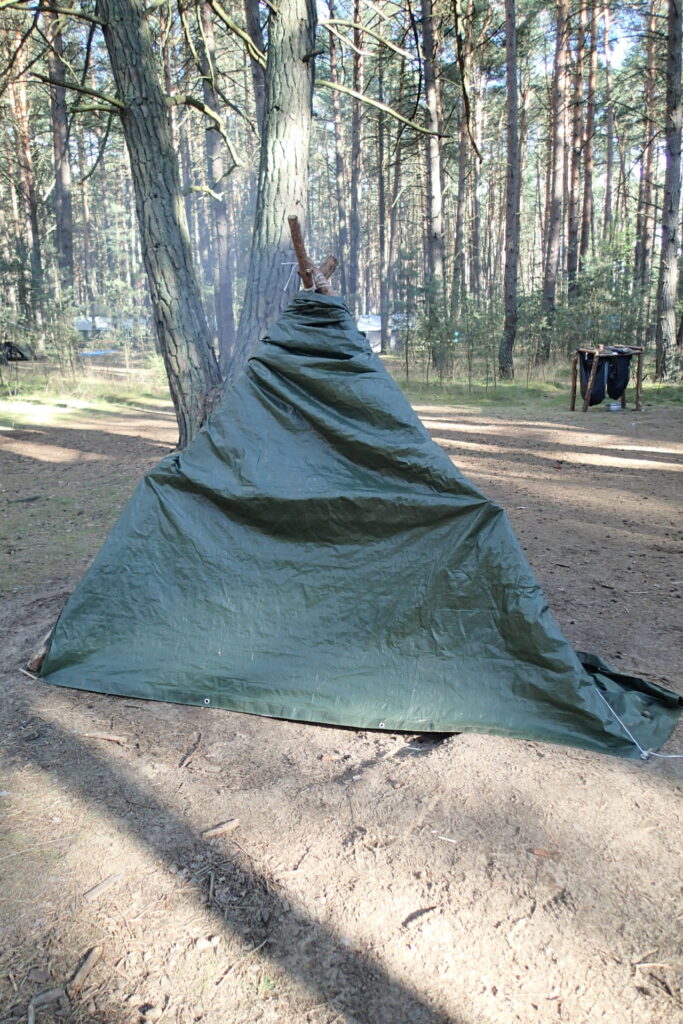
You will also need a fire pit — without a fire you won’t get any smoke. Clear the ground under your tripod and make a standard, shallow fire pit (for more information on fire pits, check my article “How to Start: Making the Fire pit and the Cooking Station”). Cover your tripod with a tarp or blanket (use two or three if one is not enough). Make sure there is a way for the smoke to escape from the top of your smoker. If you don’t leave a hole at the top, the smoke will circulate inside and you can easily oversmoke your food.
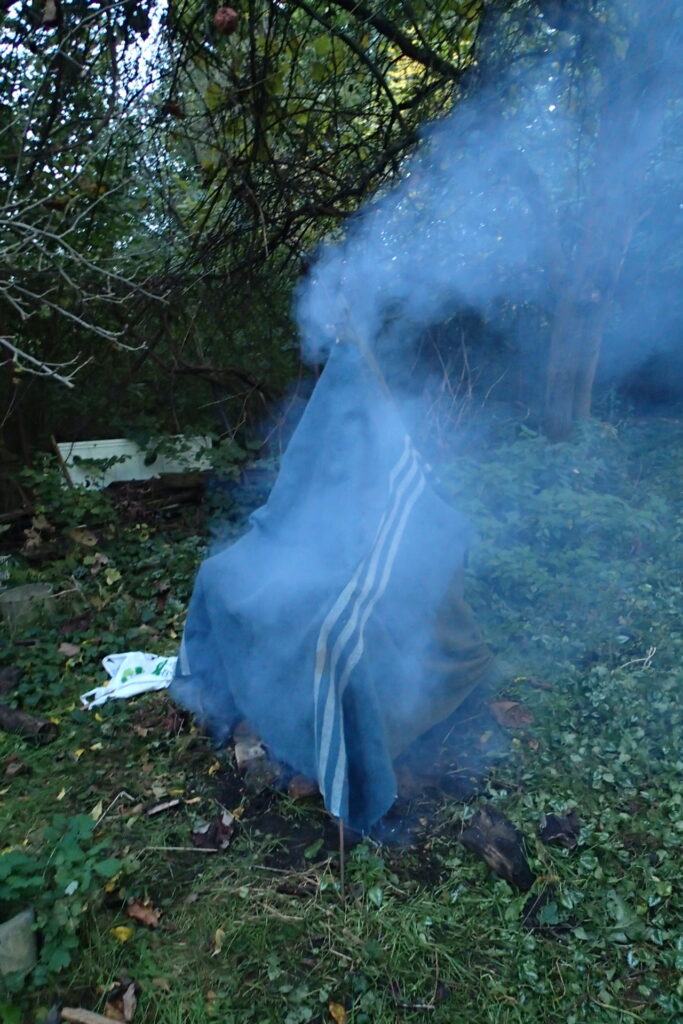
What to smoke?
People mainly smoke meats and fish to preserve them, but you can also smoke other foods like vegetables, fruit, and cheese. I have personally smoked meats and fruit, but I still need to try other products. If you’re smoking meat or fish, salt it and add spices before smoking.
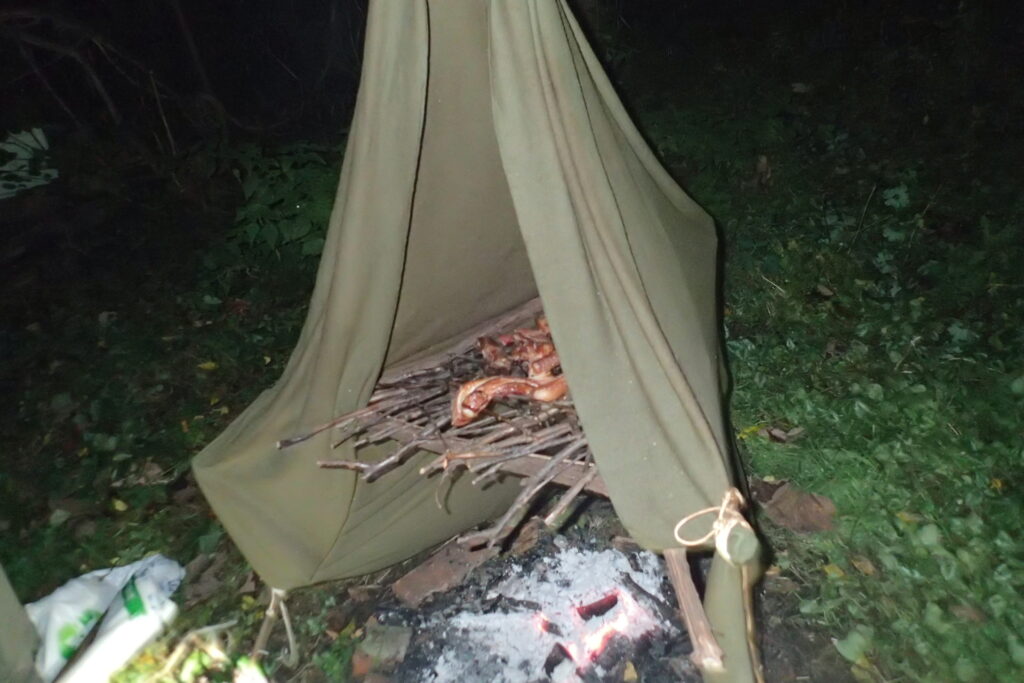
Smoking your produce
Hang your products with some cordage or lay them on the grate. Leave some space between them so they don’t touch, as we want the smoke to cover the food from all sides. Then make a small fire in your fire pit below. When the fire gets nice, bright, and hot, add very thick pieces of wood on top. They’ll start to produce smoke, as it’s hard for the fire to burn through them completely. They should smoulder, but not burn with a bright flame.
Make sure to use only wood from deciduous tree species for smoking. Conifers produce thick black smoke, which leaves a bitter taste and makes your product look unpleasant. Also, don’t use wood that is toxic or poisonous, as it can spoil your food or make it unsafe to eat.
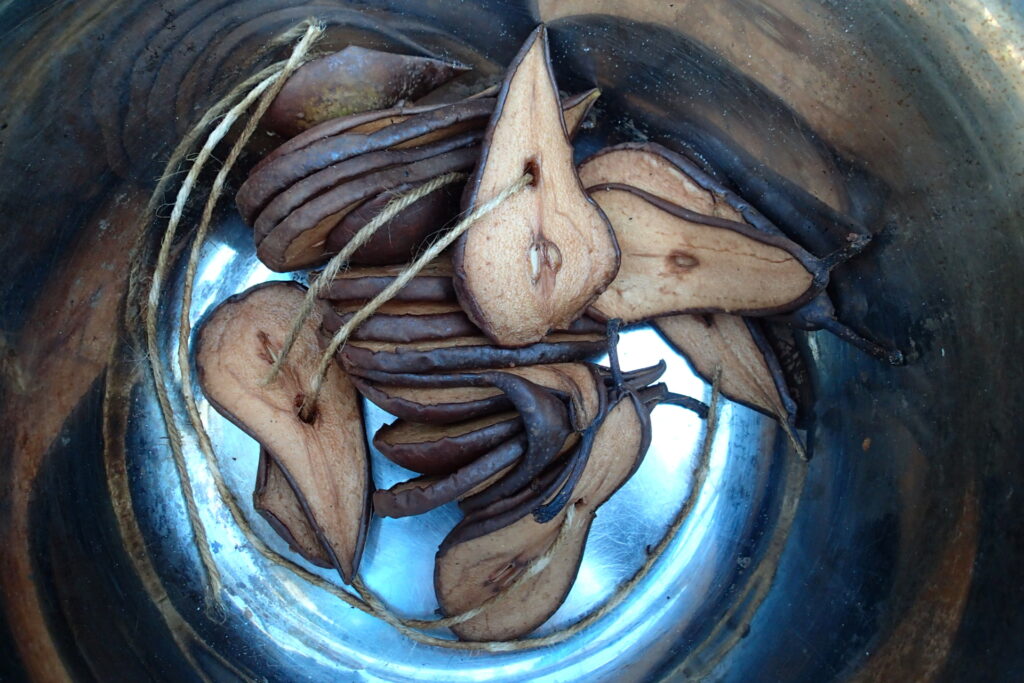
Aromatic smoke
You can use certain plants to add interesting flavours to your smoke. If you pick some green herbs or other wild aromatics, you can throw them on top of your smouldering wood and they’ll produce lots of pleasant-smelling smoke that will flavour the food. Always test the herbs before use — you don’t want an unpleasant surprise when eating your smoked ham or cheese. I have used juniper needles, but I have also heard that rosemary is great for smoke flavouring.
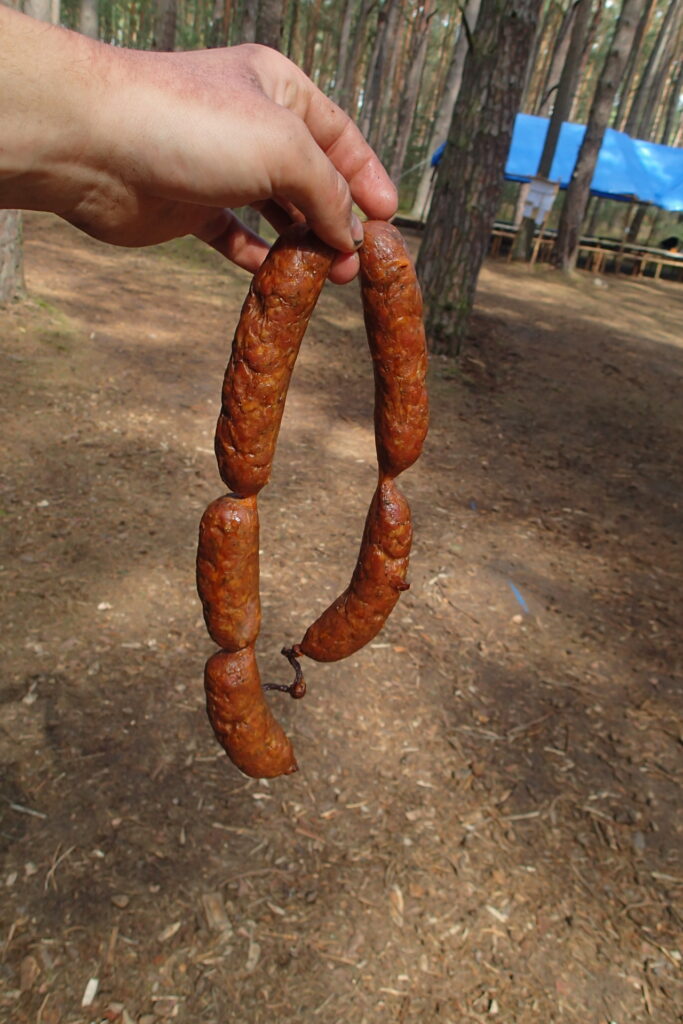
How long to smoke?
If you just want to flavour your food lightly with smoke, 40 minutes to 1 hour will be enough. If you want more flavour and some of the preservative properties of the smoke, smoke for 2 to 3 hours. If your main goal is food preservation, smoke for as long as you like — the more smoke, the better!
Cold smoke vs. hot smoke
Cold smoking is when you smoke your food at low temperatures, so it does not cause the proteins in your food to set. Hot smoking is when food is exposed not only to smoke but also to the hot air from the fire, which will slowly cook it. Some foods, like cheese, require low temperatures. If you are making a maturing smoked sausage, you should avoid coagulating the proteins. High temperatures will cook your product, which is great for poultry (which should never be eaten raw) and other meats you want to eat immediately after smoking.

